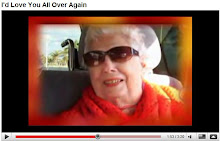The US National Academy of Sciences Defines Elder Abuse as Follows:
AUTHOR INFORMATION
Author Information Introduction Clinical Differentials Workup Treatment Medication Follow-up Miscellaneous Bibliography
Author: Monique I Sellas, MD, Staff Physician, Department of Emergency Medicine, Harvard Affiliated Emergency Medicine Residency Program, Brigham and Women's Hospital/Massachusetts General Hospital
Coauthor(s): Laurel H Krouse, MD, Consulting Staff, Department of Emergency Medicine, Paoli Hospital
Monique I Sellas, MD, is a member of the following medical societies: American Academy of Emergency Medicine, American College of Emergency Physicians, Emergency Medicine Residents' Association, Massachusetts Medical Society, and Society for Academic Emergency Medicine
INTRODUCTION
Author Information Introduction Clinical Differentials Workup Treatment Medication Follow-up Miscellaneous Bibliography
Background: Over the past 35 years, tremendous strides have been made in identifying and increasing awareness about patterns of abusive relationships. Child abuse and domestic violence have received significantly more recognition than elder abuse and continue to receive more attention in both public and medical domains, although abuse clearly occurs in persons of all ages.
With current medical advances and the adoption of healthier lifestyles, people are living longer. Older Americans now comprise the fastest growing segment of the United States population. According to the US Census Bureau, people 65 years of age and older accounted for 13% of the US population in 1994. By the year 2020, this group will increase by 3.8%, and by 2050, older Americans may account for 20% of the population.
As a result of the sheer number of older Americans, the number of elder abuse cases will increase, and the impact of elder abuse as a public health issue will grow. Victims of violence have twice as many physician visits compared with the general US population, allowing opportunities for discovery and intervention.
Elder mistreatment is a multidimensional phenomenon that encompasses a broad range of behaviors, events, and circumstances.
The US National Academy of Sciences Defines Elder Abuse as Follows:
Intentional actions that cause harm or create a serious risk of harm (whether or not harm is intended), to a vulnerable elder by a caregiver or other person who stands in a trusted relationship to the elder
Failure by a caregiver to satisfy the elder's basic needs or to protect the elder from harm.
Seven categories of elder abuse have been described by the National Center on Elder Abuse (NCEA). Categories include the following:
Financial abuse - Misuse of an elderly person's money or assets for personal gain. Coercion (changing a will, assuming power of attorney) constitute financial abuse.
Substantial evidence exists for the following risk factors of elder abuse:
Dementia
Social isolation
Although not guided strongly by evidence, a number of clinical findings and observations make elder abuse a strong possibility, including the following:
Injuries inconsistent with history
Laboratory findings indicating underdosage or overdosage of medications
Venereal disease or genital infections
Dehydration, malnutrition, decubitus ulcers, poor hygiene
Signs of withdrawal, depression, agitation, or infantile behavior
The effect of stress factors (eg, alcohol or drug abuse, potential for injury from falls employment problems, low income on the part of the abuser) may all culminate in caregivers' expressions of anger or antagonism toward the elderly person, resulting in violence
Psychopathology in the abuser: This theory focuses on a psychological deficiency in the development of the abuser, personality disorders and other conditions can increase the likelihood of elder abuse.
















No comments:
Post a Comment